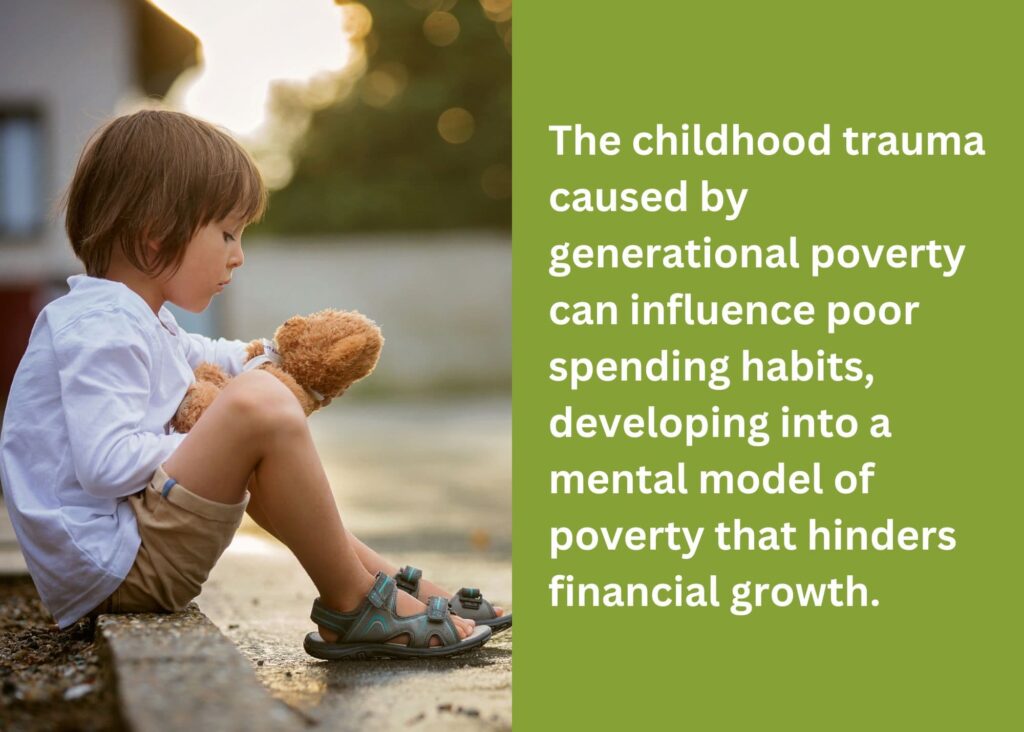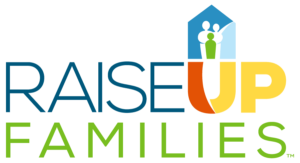

Here’s an important statistic: finances are the number one cause of stress in the United States.
In a 2020 study by CreditWise, people ranked finances as significantly more stressful than politics, work, and family. Stress causes a myriad of issues like headaches, anxiety, and a greater risk of illnesses ranging from digestive to heart issues.
As we can see, achieving financial stability is inseparably linked with overall well-being. So, how can families reach financial stability? How can communities support struggling families?
Helping families become financially stable is what RaiseUp Families is all about, so we wrote this blog to answer these questions.
Let’s take a closer look!
Before finding a solution, we need to identify the problem and what's causing it. With 60% of Americans living paycheck to paycheck, any unexpected expense can tip families into the whirlpool of financial instability.
Financial instability stems from many factors, but we’ll list seven common ones here.
To read more about the causes of financial insecurity, read our blog "7 Contributing Factors to Financial Insecurity in Families (Plus 8 Ways to Find Resources)".
Now that we’ve got a picture of the issue let’s break down the path to financial stability.
As we can see, families may not have control over some factors contributing to financial troubles. Understandably, this can make a person feel hopeless and lost. But simply being angry at the powers that be or waiting around for them to change is a losing game.
The alternative?
Start with the factors you can control.
Here are three ways to get on the road to financial stability.

Take back control. Start by looking for aspects of the situation that are in your control. How do you use your money? What can you change? This might take a bit of searching in some cases. Sometimes, the best way to assert yourself is by asking for help.
Ditch the Victim Mentality
At points, everyone is truly a victim. Sometimes it’s important to acknowledge this and seek help. However, one of the biggest factors in making a life change is to believe you can do it. So, begin by taking responsibility for your situation, view yourself as someone who can overcome, and be willing to take slow, small steps toward that every day.
Become Goal-Oriented. It's tough to make career goals when trying to make it through the month while worrying about being late on rent and enough food for your kids. However, financial stability is directly related to income, and sometimes the best thing to do is ask, “Do I need to change my career to increase my income?” Consider pursuing a certification or trade education that could get you to a stable place financially.
Identify Wants vs. Needs. It's comforting to use spending to soothe anxiety or simply make yourself feel good. Become financially aware by learning to identify needs vs. wants. Sometimes, what initially feels like a need is actually a want. If you want to become financially stable, practice saying no to wants. Remember! Wants aren’t bad, but in excess, they can single-handedly cause financial hardship. Once you’ve achieved stability, you can say yes to some wants again.
Identify Learned Spending Behaviors. We all learn behavior from our parents and communities. The childhood trauma caused by generational poverty can influence poor spending habits, developing into a mental model of poverty that hinders financial growth.

The #1 practical place to start is personal finances. If you’ve developed poor spending habits or don’t know where your money is going, you could be in financial trouble even if you have a great income. Here’s an example.
Sarah* had a decent job and felt she was doing well overall. She regularly glanced at her credit card statement's total, and since it was always around the same amount, she never bothered to look closer. However, she experienced some unexpected expenses and realized she was in trouble. After looking at her card statements more closely, she realized she’d unknowingly paid several subscriptions for over six months.
Sarah’s experience demonstrates how unawareness of personal finances can quickly get you into a tight place. In her case, the problem wasn’t so much with her income. Instead, the problem was how she was managing her money.
In other cases, the problem may be income. So, how do you know what’s causing the financial hardship in your case?
Start by tracking your finances. Two key ingredients to achieving financial stability are learning how to track your weekly spending and identifying your monthly expenses. Before creating a budget or changing jobs, log your weekly/monthly expenses and your general spending. Here are a few tips to get you started:
Of course, this is only one way to organize your personal finances. Other approaches may be more detailed or prioritize specific categories based on your circumstances. We recommend getting input on what’s right for your situation. More on this later.
Tracking your finances might initially seem a little overwhelming, but it’ll be worth the effort! And it's a necessary step before creating your budget.

Create a budget. After you’ve developed a good sense of where your money is going, it's time to create a budget. Based on your findings, consider where you can cut expenses. You can make a budget in many ways, from putting cash in labeled envelopes, creating a spreadsheet, or downloading a budgeting app on your phone. Choose an approach that works for you.
*Name changed for privacy.
Sometimes, the best way to take control of your situation is to reach out for help. None of us have all the resources we need, and that's why we need community!
Find Local Resources. There are resources available if you know where to look. Here’s a quick run-down of places to access resources to become financially stable.
Prioritize Mental Health. Your mental health matters. It's hard to achieve financial stability when facing mental health challenges. Prioritize your mental health by asking what services are available. There are many free resources available. Check for books, audiobooks, and magazines at your local library. Online recourses include websites like Mental Health America and YouTubers like Steph Anya, a licensed marriage and family therapist.
Of course, this won’t replace getting counseling. Explore what counseling resources are available in your area by going to United Way or Findhelp. You’ll never regret investing in your mental health!
Families and communities are necessary allies for families pursuing financial stability. Here are a few things you can do to help members of your community or someone you love.
It's hard to help family members achieve financial stability without taking on their issues or simply giving them money. We always recommend referring family to professional resources with no emotional connection. Achieving financial stability is a learning journey with inevitable blunders. When a person messes up and makes an impulsive purchase, the professional can effectively help them identify their needs vs. wants. However, a family member may have an inappropriate emotional reaction, which could damage the relationship.

If you’re a business owner, hire locally! Hiring locally benefits business owners by fostering community engagement and support. Beyond providing a paycheck, it benefits families in your community by contributing to the local economy's growth and sustainability.
Does your community have resources to help families facing financial hardship? If yes, explore ways to support, like volunteering or spreading the word. If not, consider partnering with other community members and organizations to bring this necessary resource to your community.
To learn more about helping families in financial hardship, read our blog “A Guide to Helping Families in Financial Need."
The path to achieving financial stability can be long, and it isn't always smooth. But with perseverance and assistance, financial stability is possible!
At RaiseUp Families, we help families achieve financial security by providing direct assistance, counseling, and financial education.
If you or someone you love is struggling financially, please don’t hesitate to reach out!
If you’re interested in partnering with us to give a Hand Up to a family living in crisis, please visit our Ways To Give page. As a 100% privately funded organization, we couldn’t do what we do without the generous support of others.
Thanks for spending time with us today!
